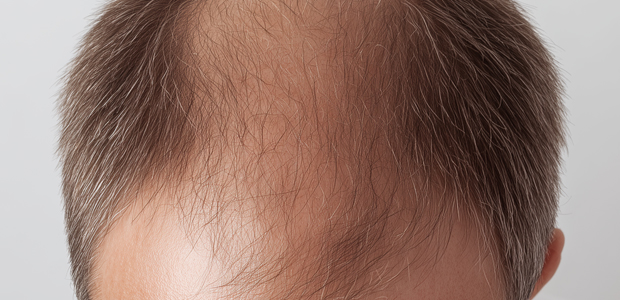Alopecia, commonly known as hair loss, affects millions of people worldwide and can significantly impact quality of life. For healthcare providers treating alopecia patients, proper coding and billing are essential for accurate reimbursement and documentation. Knowing the appropriate Current Procedural Terminology (CPT) codes for various alopecia treatments ensures compliance with insurance requirements and facilitates proper patient care coordination.
Alopecia Treatment
 Alopecia encompasses various forms of hair loss, including androgenetic alopecia (male and female pattern baldness), alopecia areata (patchy hair loss), alopecia totalis (complete scalp hair loss), and alopecia universalis (total body hair loss). Treatment approaches vary significantly depending on the type and severity of hair loss, ranging from topical medications and injections to surgical procedures and advanced therapies.
Alopecia encompasses various forms of hair loss, including androgenetic alopecia (male and female pattern baldness), alopecia areata (patchy hair loss), alopecia totalis (complete scalp hair loss), and alopecia universalis (total body hair loss). Treatment approaches vary significantly depending on the type and severity of hair loss, ranging from topical medications and injections to surgical procedures and advanced therapies.
The complexity of alopecia treatment requires healthcare providers to be well-versed in the appropriate CPT codes for each intervention. These codes serve as the standardized language for describing medical procedures and services, ensuring consistent billing practices across healthcare systems.
Primary CPT Codes for Alopecia Treatment
Injection-Based Treatments
11900 – Injection, intralesional; up to and including 7 lesions
This code is frequently used for intralesional corticosteroid injections, a common first-line treatment for alopecia areata. The procedure involves injecting corticosteroids directly into the affected areas of the scalp to reduce inflammation and stimulate hair regrowth. The code applies when treating up to seven distinct lesions or areas of hair loss.
11901 – Injection, intralesional; more than 7 lesions
When treating extensive alopecia areata with multiple patches or larger areas requiring more than seven injection sites, this code becomes applicable. It’s important to document the number of lesions treated to justify the use of this higher-level code.
96372 – Therapeutic, prophylactic, or diagnostic injection; subcutaneous or intramuscular
This code may be used for certain systemic treatments or when administering medications via subcutaneous or intramuscular routes as part of comprehensive alopecia management.
Topical and Phototherapy Treatments
96920 – Laser treatment for inflammatory skin disease; total area less than 250 sq cm
Low-level laser therapy (LLLT) has gained popularity as a non-invasive treatment for androgenetic alopecia. This code applies when the treated area is less than 250 square centimeters.
96921 – Laser treatment for inflammatory skin disease; 250 sq cm to 500 sq cm
For more extensive laser therapy treatments covering larger areas of the scalp, this code is appropriate when the treatment area ranges from 250 to 500 square centimeters.
96922 – Laser treatment for inflammatory skin disease; over 500 sq cm
This code is used for comprehensive laser therapy treatments covering areas greater than 500 square centimeters, which may be necessary for patients with extensive hair loss.
Surgical Hair Restoration Procedures
15775 – Punch graft for hair transplant; 1 to 15 punch grafts
Traditional punch graft procedures, though less common today, may still be performed in certain cases. This code covers procedures involving 1 to 15 punch grafts.
15776 – Punch graft for hair transplant; more than 15 punch grafts
For more extensive punch graft procedures involving more than 15 grafts, this code is appropriate.
15040 – Harvest of skin for tissue cultured skin autograft
This code may be applicable in advanced hair restoration procedures that involve harvesting skin tissue for specialized grafting techniques.
Platelet-Rich Plasma (PRP) Therapy
0232T – Injection(s), platelet rich plasma, any site, including image guidance, harvesting and preparation when performed
PRP therapy has emerged as a popular treatment for various types of alopecia. This Category III (temporary) CPT code covers the harvesting, preparation, and injection of platelet-rich plasma. It’s important to note that coverage for this procedure varies among insurance providers.
Scalp Biopsy and Diagnostic Procedures
11100 – Biopsy of skin, subcutaneous tissue and/or mucous membrane; single lesion
When diagnostic confirmation is needed, scalp biopsies may be performed to determine the specific type of alopecia or rule out other conditions. This code applies to single lesion biopsies.
11101 – Biopsy of skin, subcutaneous tissue and/or mucous membrane; each separate/additional lesion
This add-on code is used when multiple biopsy sites are necessary for comprehensive diagnosis.
Consultation and Evaluation Codes
Office Visits and Consultations
99202-99205 – Office or other outpatient visit for the evaluation and management of a new patient
These codes are used for initial consultations with new alopecia patients, with the specific level determined by the complexity of the case and documentation requirements.
99211-99215 – Office or other outpatient visit for the evaluation and management of an established patient
Follow-up visits for established patients undergoing alopecia treatment are coded using these E/M codes, with levels varying based on the complexity of the visit.
99401-99404 – Preventive medicine counseling
These codes may be applicable when providing extensive counseling about hair loss prevention, lifestyle modifications, or treatment options.
Specialized Diagnostic Codes
Trichoscopy and Advanced Diagnostics
96900 – Actinotherapy (ultraviolet light)
While not exclusively for alopecia, this code may be relevant for certain phototherapy treatments used in comprehensive hair loss management.
96902 – Microscopic examination of hairs plucked or clipped by the examiner to determine telogen and anagen counts
This specialized diagnostic procedure helps determine the growth phase of hair follicles and can be crucial in diagnosing certain types of alopecia.
Documentation and Coding Considerations
Medical Necessity and Documentation
Proper documentation is crucial for successful reimbursement of alopecia treatments. Healthcare providers must clearly document the medical necessity of each procedure, including the type of alopecia, severity of hair loss, previous treatments attempted, and expected outcomes. Photography can be valuable for documenting baseline conditions and treatment progress.
Insurance Coverage Variations
Insurance coverage for alopecia treatments varies significantly among providers and specific policies. While treatments for medical conditions like alopecia areata may have better coverage, procedures for androgenetic alopecia are often considered cosmetic and may not be covered. Providers should verify coverage before treatment and inform patients of potential out-of-pocket costs.
Modifier Usage
Certain situations may require the use of modifiers to provide additional information about the procedure performed.
Common modifiers include:
- -25 (Significant, separately identifiable evaluation and management service): Used when an E/M service is provided on the same day as a procedure
- -50 (Bilateral procedure): Applied when the same procedure is performed on both sides of the body
- -76 (Repeat procedure by same physician): Used for repeat procedures performed by the same provider
Emerging Treatments and Future Coding Considerations
Microneedling and Combination Therapies
96920-96922 may be applicable for certain microneedling procedures when performed with laser therapy, though specific coding for standalone microneedling may require unlisted procedure codes.
Stem Cell Therapy
As stem cell therapy for alopecia continues to develop, providers may need to use unlisted procedure codes (such as 17999 for unlisted dermatologic procedures) until specific CPT codes are established.
Hair Transplant Innovations
Modern hair transplant techniques like Follicular Unit Extraction (FUE) and Follicular Unit Transplantation (FUT) may require the use of unlisted procedure codes or existing codes that best describe the work performed, as specific codes for these newer techniques are still being developed.
Best Practices for Alopecia Treatment Coding
Accurate Code Selection
Selecting the most appropriate CPT code requires careful consideration of the specific procedure performed, the extent of treatment, and the underlying condition being treated. Providers should review code descriptions thoroughly and consult coding resources when uncertain.
Regular Updates and Education
CPT codes are updated annually, and new codes may be added for emerging treatments. Healthcare providers and their coding staff should stay current with these changes through continuing education and professional development.
Compliance and Audit Preparation
Maintaining detailed records and following proper coding guidelines helps ensure compliance with regulatory requirements and prepares practices for potential audits. Regular internal audits can help identify and correct coding errors before they become larger issues.
Summary: Alopecia Treatment CPT Codes
 Proper CPT coding for alopecia treatment is essential for healthcare providers to ensure accurate billing, appropriate reimbursement, and compliance with regulatory requirements. The diverse range of treatment options available for hair loss conditions requires a thorough understanding of the applicable codes and their proper usage.
Proper CPT coding for alopecia treatment is essential for healthcare providers to ensure accurate billing, appropriate reimbursement, and compliance with regulatory requirements. The diverse range of treatment options available for hair loss conditions requires a thorough understanding of the applicable codes and their proper usage.
Alopecia treatment will change with new technologies and therapies. Therefore, staying current with coding updates and best practices remains crucial. Healthcare providers should work closely with experienced coding professionals and continue their education to maintain expertise in this intricate area of medical billing.
Disclaimer: CPT codes and billing guidelines change frequently. This article is for informational purposes only and should not be considered as billing advice. Always verify current codes and payer requirements before submitting claims.

